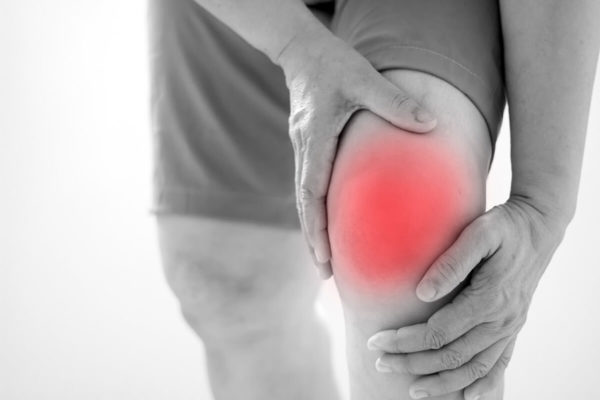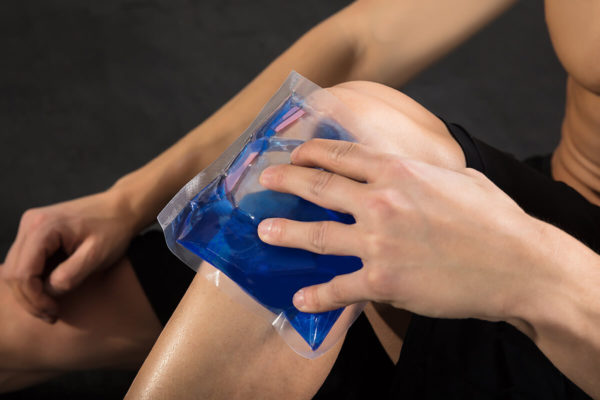What is hyaluronic acid?
Hyaluronic acid is a naturally occurring molecule found in both articular cartilage (the friction reducing, shock absorbing tissue covering the bony surfaces of a joint) and the synovial membrane, the inner lining of the joint capsule. This lining is responsible for the production of synovial fluid which keeps the joint lubricated. The articular cartilage and the synovial membrane, along with its synovial fluid, work together to provide a well-lubricated, shock absorbent joint that can withstand the rigours of daily life (Sirin et al., 2018).
What is molecular weight?
Naturally occurring hyaluronic acid has a high molecular weight. The molecular weight of hyaluronic acid is of great importance to the health of the joint. High molecular weight hyaluronic acid (weighing over 800kDa) produces a fluid which is much more viscous (thick and sticky) and elastic (the ability of a material to return to its original shape after experiencing deformation) than its low molecular weight counterpart (ranging between 80-800kDa). Shock absorption and lubrication are dependent on the viscoelastic properties of hyaluronic acid. If the molecular weight of hyaluronic acid lowers, the joint becomes less lubricated and is unable able to absorb shock. A joint which is poorly lubricated and less able to withstand shock is at a higher risk of injury and degeneration (Bowman et al., 2018).
How do hyaluronic acid injections work?

Hyaluronic acid injections involve introducing, via an ultrasound-guided injection technique, a measured dose of a synthetically produced hyaluronic acid directly into the affected joint.
Research has shown that hyaluronic acid injections are able to supplement the loss of naturally occurring hyaluronic acid within a joint. Synthetic hyaluronic acid injections create a series of chemical reactions resulting in following disease modifying joint changes (Altman et al., 2015):
- The promotion of healthy articular cartilage cells (known as chondrocytes) and the inhibition of cartilage cell death (known as apoptosis). This process is known as chondroprotection.
- The production of proteoglycans within articular cartilage. Proteoglycans are key components of articular cartilage aiding its ability to withstand pressure.
- The production of anti-inflammatory chemical mediators to reduce pain and inflammation in an irritated joint.
- Increased joint lubrication and shock absorption due to the aforementioned viscoelastic properties attributed to hyaluronic acid.
- Increased subchondral bone production. Increasing subchondral bone production increases bone density reducing pressure on the adjacent articular cartilage.
For a more in-depth description of the mechanism of action of hyaluronic acid please click here.
What can be treated with hyaluronic acid injections?

Hyaluronic acid injections have been routinely used in musculoskeletal healthcare for many years to treat a multitude of conditions. The vast majority of research in the field of hyaluronic acid injections has been conducted in patients suffering from osteoarthritis and in particular osteoarthritis of the knee, however hyaluronic acid injections can be used to successfully treat many other conditions.
Research has revealed hyaluronic acid injections to be capable of providing significant reductions in pain, increases in functional ability, and increases in quality of life for patients suffering from osteoarthritis of the weightbearing joints of the lower limbs and the thumb (Altman et al., 2015; Baron et al., 2018; Maheu et al., 2019; Gigis et al., 2016; Bahrami et al., 2020; Wu et al., 2021; Vannabouthong at el., 2018; Hwang et al., 2020; Trellu et al., 2015; Koh et al., 2019).
Hyaluronic acid injections are commonly used to treat the following pathologies:
- Osteoarthritis of the knee
- Osteoarthritis of the hip
- Osteoarthritis of the ankle
- Osteoarthritis of the thumb
- Femoroacetabular hip impingement
- Tennis elbow
- Rotator cuff pathology of the shoulder
What is the relevance of molecular weight?
Current research into the effect of different molecular weight hyaluronic acids suggests that low molecular weight solutions have higher chondroprotective capabilities and high molecular weight solutions have more anti-inflammatory properties (Huang et al., 2010). However, neither high nor low molecular weight has been shown to possess superior clinical outcomes (Gigis et al., 2016; Bahrami et al., 2020). Interestingly, Bahrami et al. (2020) compared multiple low molecular weight hyaluronic acid injections with one high molecular weight hyaluronic acid injection and observed comparable clinical outcomes. With this in mind, a single high molecular weight hyaluronic acid injection is recommended at Complete.
How is a hyaluronic acid injection completed?
Hyaluronic acid is an expensive product and therefore ensuring it is safely and accurate delivered to the intended target is essential. Research has shown 98-100% accuracy with ultrasound guidance versus 55% accuracy with landmarked guided injections (Daniels et al., 2018). Therefore, at Complete, all injection procedures are undertaken using ultrasound guidance. During a guided injection an ultrasound scanner is used to locate the intended target and position the needle safely and accurately.
For more information about hyaluronic acid injections or to book a consultation, please call 020 7482 3875 or email info@complete-physio.co.uk
What should you expect to experience after a hyaluronic acid injection?
Ultrasound-guided hyaluronic acid injections are combined with a short acting local anaesthetic (called Lidocaine). This short-acting anaesthetic will provide you with between an hour and a half and two hours of pain relief. After this wears off you may experience a short period of increased pain. This is very normal after injecting hyaluronic acid into a joint. Using some paracetamol along with ice and gentle exercise can be very effective for overcoming postprocedural pain.

Initially, for the first few weeks, you may not notice much difference after undergoing a hyaluronic acid injection. Benefits attributed to hyaluronic acid are not instantaneous. Research has shown that hyaluronic acid works slowly and can take between 2-5 weeks to become noticeable (Gigis et al., 2016; Bowman et al., 2018).
If you are in considerable pain and cannot wait for the hyaluronic acid to take effect it is possible to combine hyaluronic acid with corticosteroid. A corticosteroid is a strong anti-inflammatory medication that can provide rapid pain relief. Including corticosteroid can provide you with much needed pain relief whilst you wait for the hyaluronic acid to start working. This option can be discussed with your clinician during your appointment.
How do you achieve maximum benefit after having a hyaluronic acid injection?

A hyaluronic acid injection is not a stand-alone treatment. Research has revealed hyaluronic acid can reduce pain, increase functional ability, and increase quality of life. However, it is essential that the muscles around the affected joint are strong and as supple as possible and that the joint itself remains flexible (Hunter et al., 2009). To achieve this, and to give your injection the best chance of working, it is highly recommended that you embark on a course of physiotherapy starting about 2 weeks after injection.
Research has revealed that patients with the following attributes respond most positively to IAHA injections (Maheu et al., 2019);
- A X-ray diagnosis of mild to moderate osteoarthritis.
- Patients under the age of 60 typically respond best to IAHA injections.
- Patients, of any age, who take regular multiple medications to manage pain levels.
- High levels of pain and symptoms.
- No evidence of knee joint swelling in ultrasound imaging.
For more information about hyaluronic acid injections or to book a consultation, please call 020 7482 3875 or email info@complete-physio.co.uk
References:
Altman, R.D., Manjoo, A., Fierlinger, A., Niazi, F. & Nicholls, M. 2015, “The mechanism of action for hyaluronic acid treatment in the osteoarthritic knee: a systematic review”, BMC musculoskeletal disorders, vol. 16, no. 1, pp. 321.


